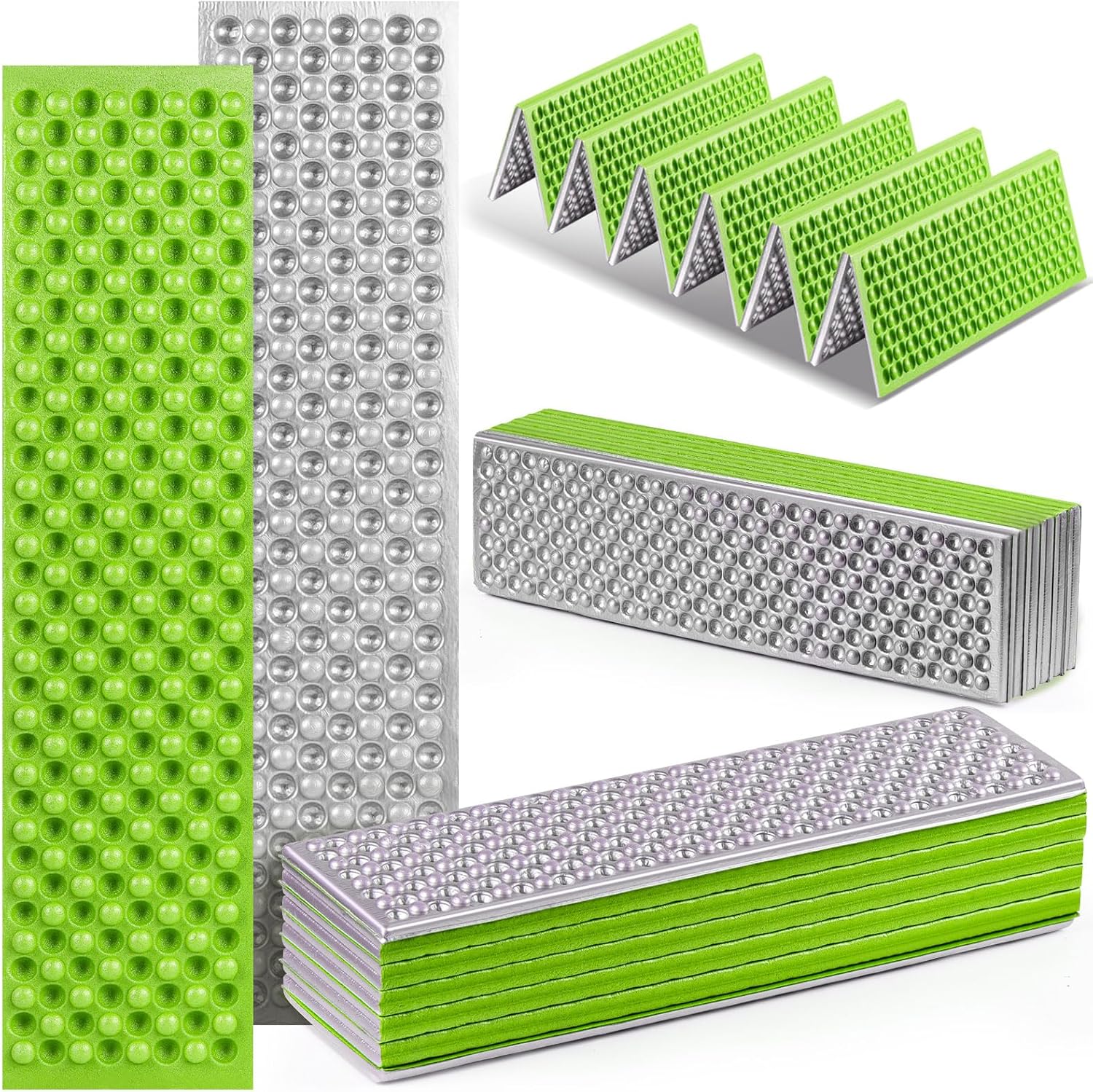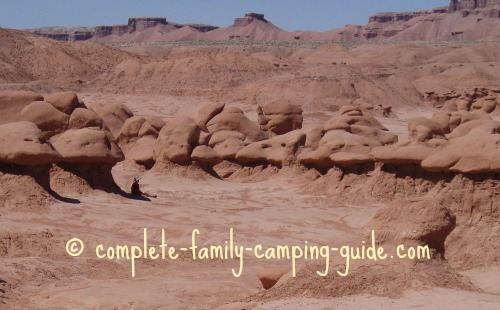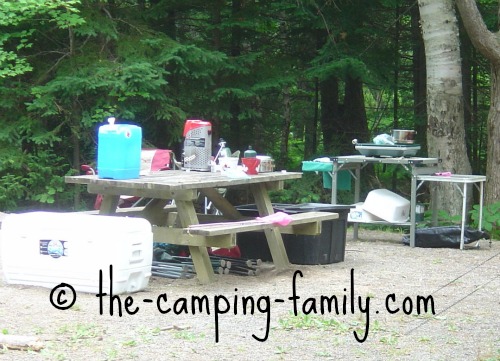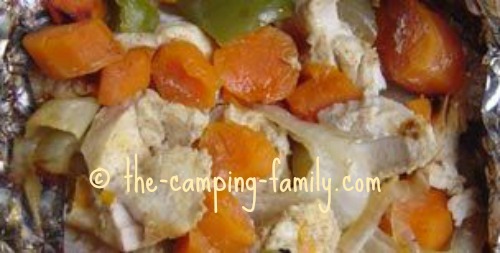Foam Sleeping Pads
Some people can sleep comfortably on foam sleeping pads. Read on to find out if you are one of those people - before you purchase one! It might make the difference between a successful camping trip and a miserable experience.
Some pads are not intended for sleeping at all - even though they might be sold in the camping aisle at your local department store! Buying one of these for your first camping trip will pretty much guarantee that you won't go on a second camping trip!
Let me help you decide whether a foam pad is a good option for you - and show you how to choose the right one.
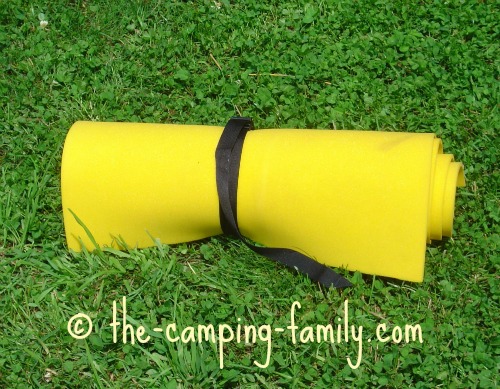
Portable Shower for Camping
This portable rechargeable camping shower set means you can shower anywhere!
Read more at Amazon here and find the best price!!
Foam Sleeping Pads
Open cell foam pads: not for camping!
Never take an open cell foam pad on a camping trip. Open cell foam is what you'll find inside a sofa pillow.
It's squishy and soft, and it soaks up water like a sponge. Soggy, squishy, mildewed ... need I say more?
Some discount camping stores sell rolls of open cell foam. I can't imagine why.
I'll say it again: Do not buy an open cell foam sleeping pad!
The information on the rest of this page refers only to closed cell sleeping pads.
Advantages of closed cell foam sleeping pads
They are economical
The low cost of foam pads makes them attractive to first-time campers - especially those who aren't sure how much camping they will do and don't want to invest a lot of money up front.
They are lightweight
Some hikers prefer foam pads because they don't add much weight to a backpack.
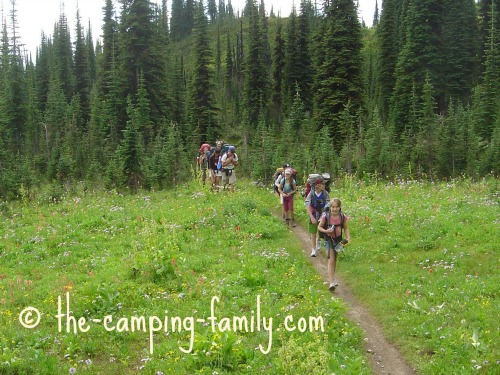
When you are carrying all of your gear on your back, weight matters!
This isn't an issue if you are car camping.
They are durable
A good quality foam pad is virtually indestructible.
They are ready to use
Just unroll the pad and you are ready to sleep on it. You don't even have to open a valve as you do with a self-inflating sleeping pad.
They are waterproof
A closed cell foam pad is not damaged by water. If it gets wet, just dry it with a cloth.
They are easy to clean
If a foam pad gets dirty, just wipe it clean with a damp cloth.
They have other uses
We keep a couple of cheap blue foam pads around the house. They come in handy for all sorts of reasons.
You can easily cut closed cell foam pads with scissors.
We cut foam sleeping pads into individual "sit upons" to carry in our day packs. When we stop for lunch on a hike, it's great to have something comfortable and dry to sit on!

Foam makes a comfy bed when you need to take a nap during a canoe trip!
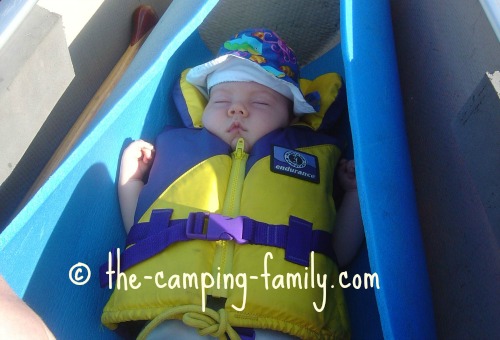
And if you happen to be four years old, wrestling with your friends on a gravel beach, a foam pad is exactly what you need!
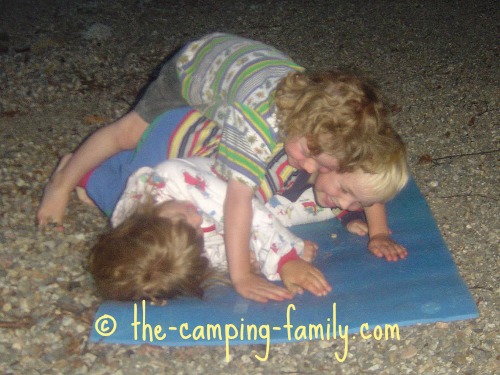
Even the most boisterous play can't hurt a foam pad. Don't try this on an air bed!
Here is a popular foam sleeping pad that you can purchase for a good price on Amazon - it even folds!
CLICK HERE for further details.
Disadvantages of Foam Sleeping Pads
They are bulky
Most foam pads - especially the more comfortable ones - take up a lot of room. This isn't a problem if you are car camping, but can be an issue for backpackers.
Update 2025 - there are now foldable foam sleeping pads like the one above!
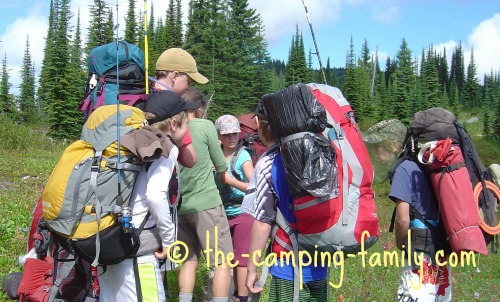
Some hikers strap their foam pads on the outside of their packs to save backpack space.
They may not be not as comfortable as other options
I used a foam sleeping pad - and slept just fine - until I was about 19 years old. Then I noticed that the ground was hard and bumpy, and that I was stiff and sore in the mornings.
I refused to sleep in a tent again, until I discovered Thermarest pads!
Is A Foam Sleeping Pad For You?
If you weigh less than 80 pounds, you'll probably be just fine on a foam sleeping pad. Children don't seem to mind them at all!
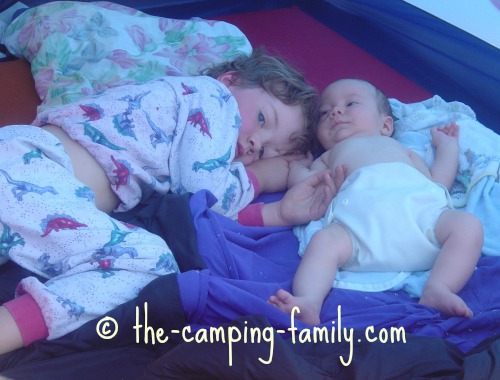
If you are a comfort-loving adult who needs a double-spring pillowtop mattress on your bed at home, you probably aren't going to enjoy sleeping on a foam pad. Consider a self-inflating sleeping pad, or even a full-sized air mattress.
If you can sleep just about anywhere, or if you pride yourself on your toughness and self-reliance, a foam sleeping pad might work for you - especially if you follow some of the suggestions below.
Increasing Your Comfort
If you do decide to buy foam, there are things you can do to make your bed as comfortable as possible.
Look for quality
Don't buy just any old foam pad at the hardware store. The cheapest foam pads aren't comfortable at all! They are hard and inflexible.
It's worth paying more to get a softer one. To test the quality, pinch the foam between your fingers. If it compresses and then quickly returns to its original width, it's a good one.
Some of the better (and more expensive) foam pads have contoured ridges to increase their comfort. Some models have an egg crate-type construction that is quite comfortable.
Choose your tent site carefully
Be sure that you are not going to be lying on roots or rocks.
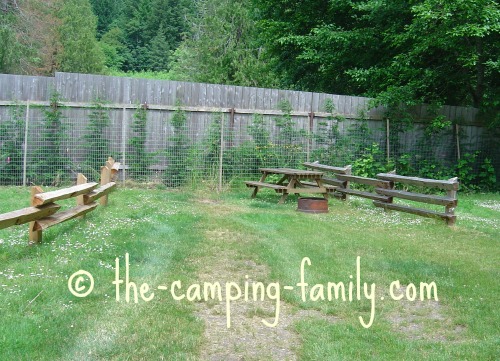
Clear away all sticks, cones, rocks and debris. You want a very flat and smooth surface.
Click here for tips on choosing a good tent site.
Use padding
For extra comfort, pad the area under your shoulders and hips with items of soft clothing.
If your foam pad is narrow, place padding on the ground beside the pad where your elbows and knees might jut out while you sleep.
The bottom line
Foam sleeping pads are an economical option. If you are not fussy about your bed, a good quality foam pad will do just fine.
If you try a foam pad and find that you don't sleep well, don't give up! Don't decide that you're just not a camping person! Get a self-inflating sleeping pad!
Now that you know about foam sleeping pads, you might want to consider some different sleeping pad options.
Visit The Camping Family home page for help planning your next trip. I have suggestions for gear, meals, activities and more!
Most Popular
Product of the Month
Iwatani Camp Stove
The perfect portable cooktop!
CLICK HERE for more information and best price
Recent Articles
-
Goblin Valley State Park, Utah
Apr 18, 25 03:50 AM
Goblin Valley State Park in Utah is a fascinating place for a family camping trip! There's a comfortable campground, a Visitors' Center, clean bathrooms ... and goblins! -
Folding Camping Table. Discover Why You Need One And Which One To Get
Apr 17, 25 11:13 AM
A folding camping table can be very handy to have at the campsite! Check this buying guide to find just the right one for you. -
Foil Dinners with Chicken and Vegetables - Great For Camping!
Apr 17, 25 10:52 AM
Enjoy these delicious foil dinners cooked in the campfire on your next camping trip. I love that most of the work is done at home!

